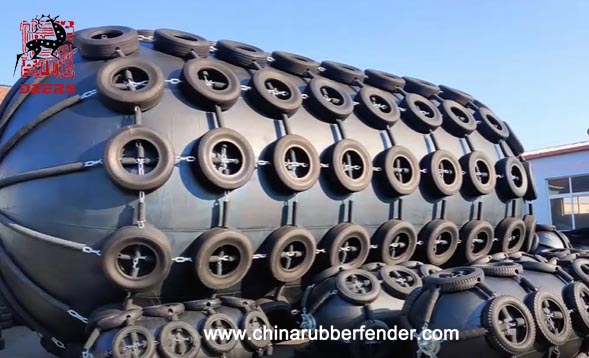How to choose pneumatic fender
Five points help you choose pneumatic fender
(1) Maximum energy absorption E;
(2) Reaction force;
(3) Distance requirements after the berthing of two ships or the berthing distance from the ship to the dock, including the maximum distance and the minimum distance;
(4) The size of the ship;
(5) Factors such as wind waves and temperature changes in the actual use environment.
Among them, the distance requirement after berthing is a very important factor. After berthing, in order to facilitate cargo handling, there is a requirement for the distance between the two ships, so the maximum diameter of the designed pneumatic fender cannot exceed this distance. However, when two ships collide, the minimum spacing is often required, which determines the maximum working height of the pneumatic fender. When two ships are berthed, if one of the ships is equipped with a protrusion such as a bracket, there is a minimum spacing requirement in this case. If the minimum spacing is greater than the working height when the selected pneumatic fender is compressed by 60%, then the maximum working height of the fender should be calculated by the minimum spacing instead of the usual 60%.
When it is necessary to improve the energy absorption performance of pneumatic fender, we should first consider increasing the diameter of fender instead of increasing the length and internal pressure. It can be seen from Figure 2 that, compared with increasing the fender length and internal pressure, after increasing the diameter, the inflation fender reaction force increases little at the same working height, and the safe working height is increased. Normally, the maximum distance between two ships will not conflict with the requirement of increasing the diameter of the pneumatic fender. Under special circumstances, if there is a contradiction between them, if the reaction force of the ship allows, we can consider increasing the length, increasing the internal pressure, or choosing other types of fenders, such as foam-filled fenders.
Compared with other types of fenders, the reaction force of pneumatic fenders is very small, and usually, the reaction force acting on the ship’s side or dock is within the allowable range. The safety pressure of some light warships, such as cruisers and destroyers, is low, only 96.5 kPa. Therefore, the design of pneumatic fenders for warships needs to pay special attention to the safety pressure of the hull. In principle, two pneumatic fenders should be used as anti-collision points for berthing between two ships, and one or two pneumatic fenders should be added correspondingly for larger ships to improve the safety of the system. The spacing and quantity of pneumatic fenders can refer to the design standards of wharf fenders in various countries, and be designed according to the size of berthed ships, berthing frequency and existing wharf fenders, etc.
In short, the selection of a pneumatic fender system first needs to determine the collision energy of the ship when berthing and after berthing, select the specifications of the pneumatic fender according to the distance requirements (maximum distance and minimum distance) after berthing, and verify whether the maximum reaction force of pneumatic fender is within the allowable range of hull design. If it is necessary to improve the energy absorption of the pneumatic fender, increasing its diameter is an ideal choice. The number and spacing of pneumatic fenders are determined according to the size and actual use of the ship.


